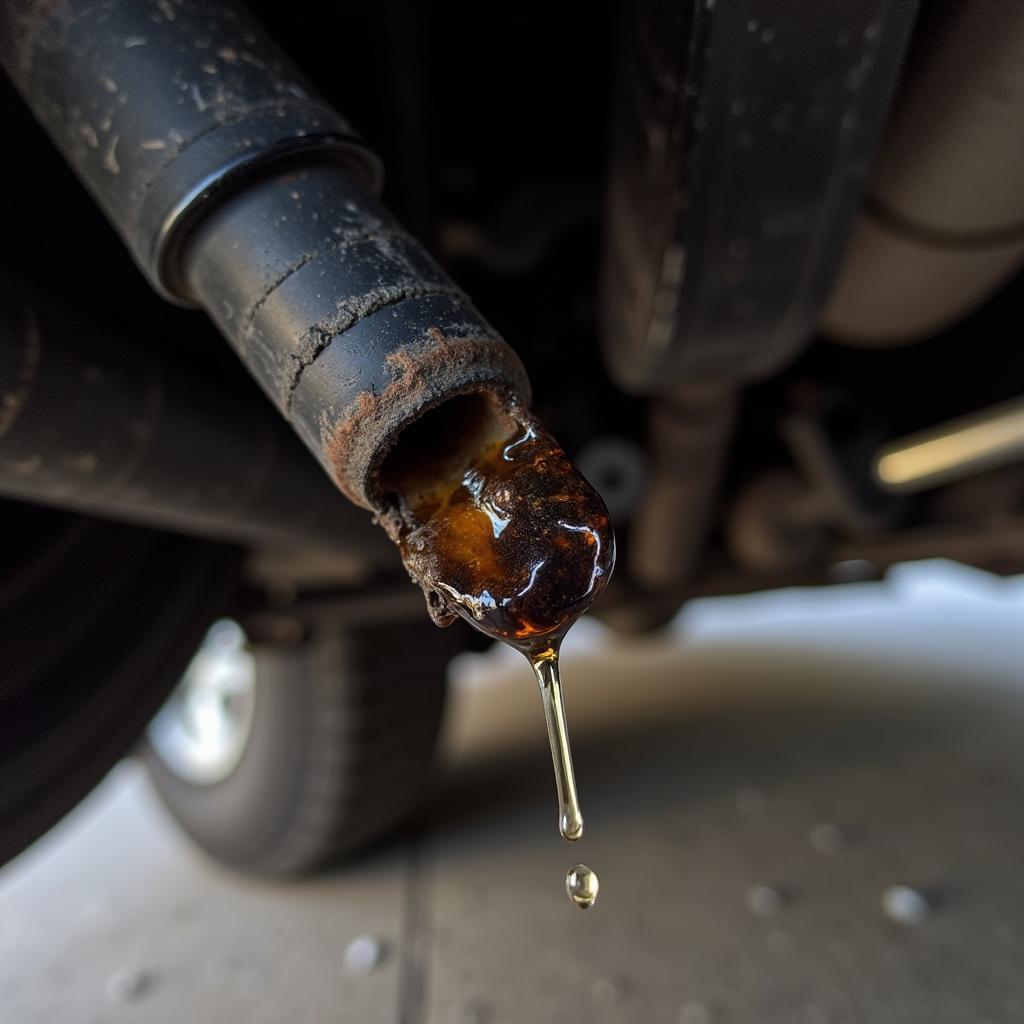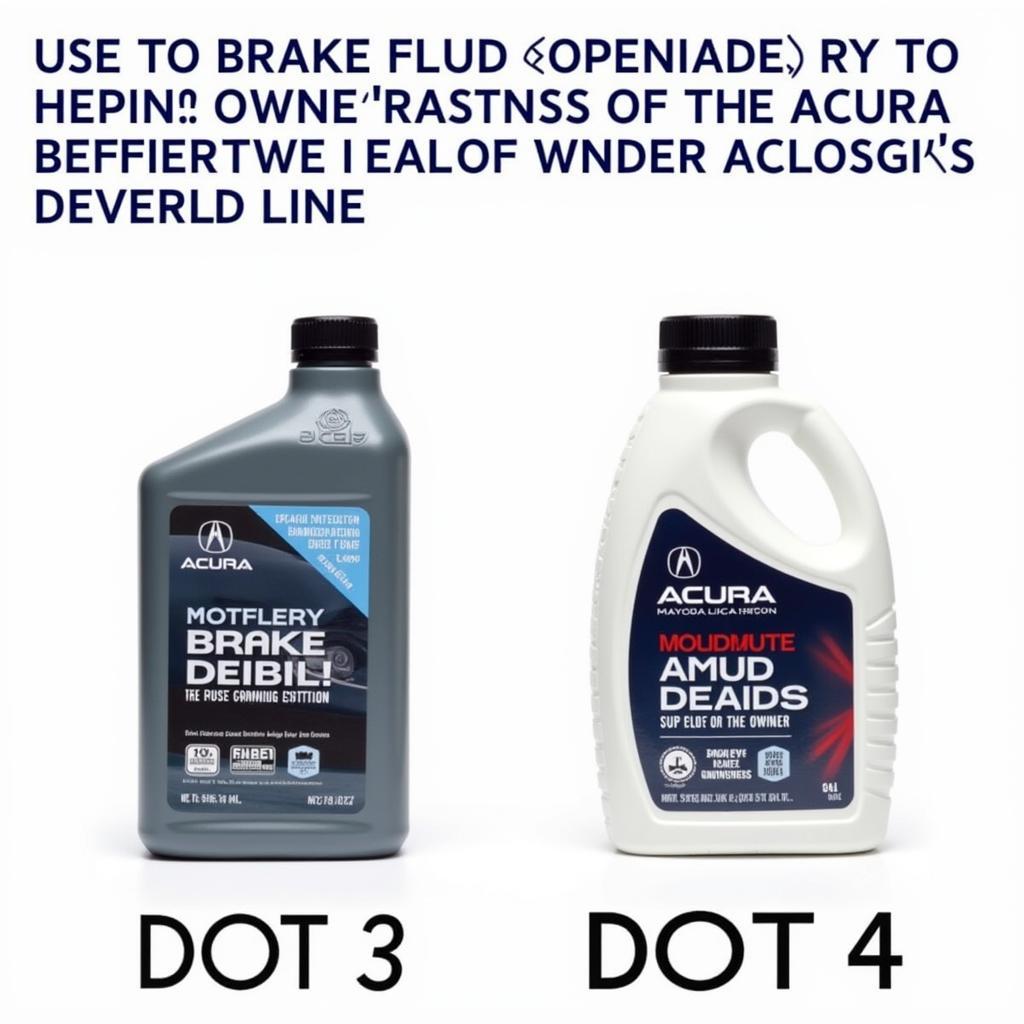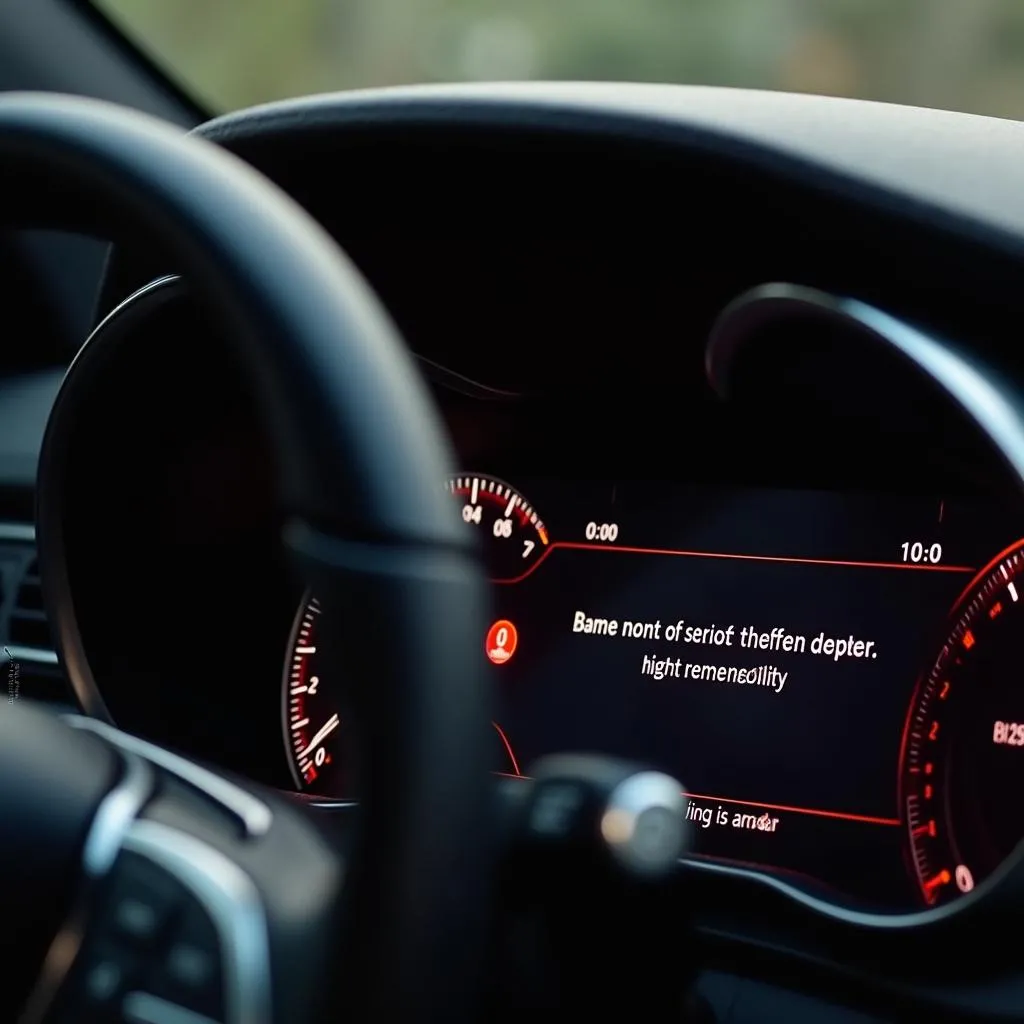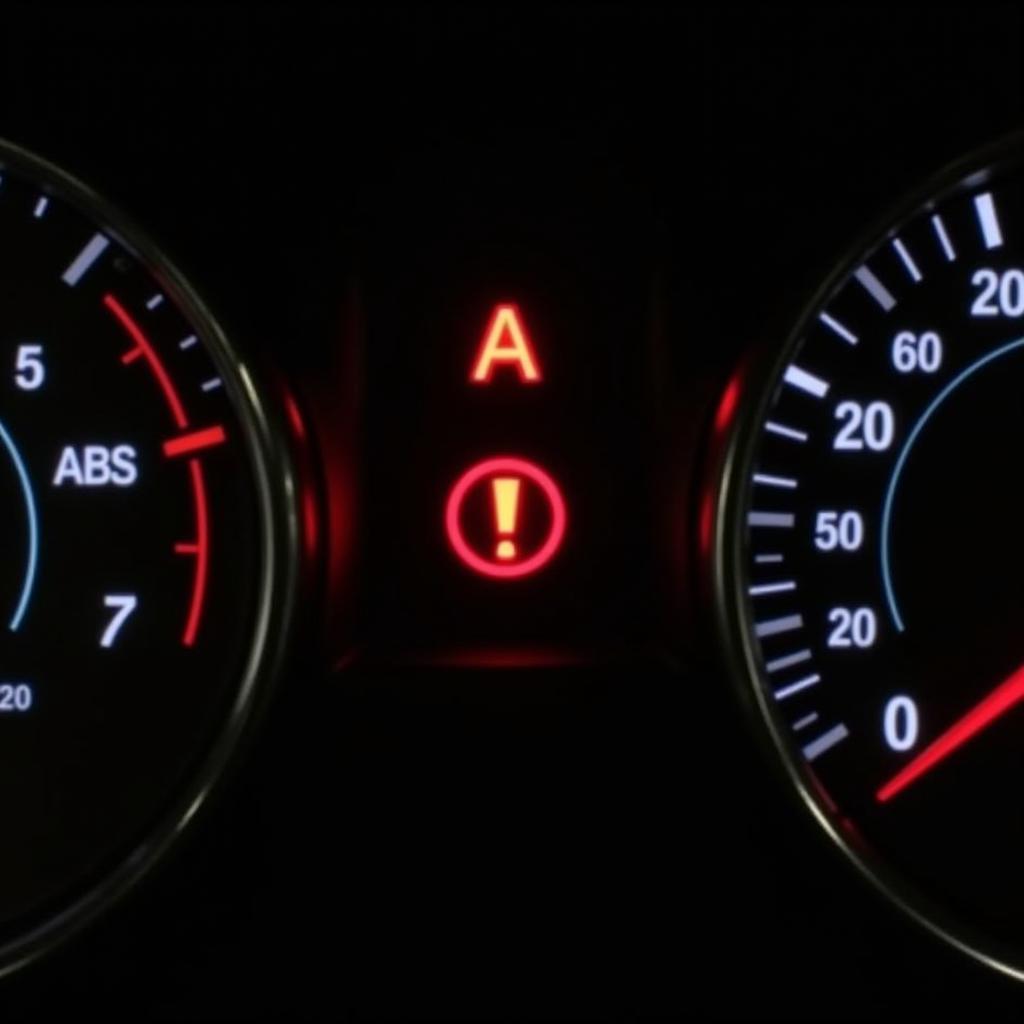Getting a “brake fluid low” warning on your Acura’s dashboard can be alarming. It’s a crucial signal indicating a potential issue within your car’s braking system that shouldn’t be ignored. This article delves into the common causes behind this warning light in Acura vehicles and provides a step-by-step guide on how to troubleshoot and address the problem.
Understanding the Acura Brake Fluid Low Warning
Your Acura’s braking system relies on hydraulic pressure to function correctly. When you press the brake pedal, brake fluid amplifies this force, pushing the brake pads against the rotors and stopping your car. A “brake fluid low” warning typically means the fluid level in the reservoir has dropped below a safe level, potentially compromising your car’s ability to brake efficiently.
Why is My Acura Brake Fluid Low?
Several factors can contribute to low brake fluid in Acura vehicles:
-
Worn Brake Pads: As brake pads wear down over time, the brake calipers need more fluid to engage the brakes. If your Acura has high mileage or you haven’t replaced your brake pads recently, this is a likely culprit.
-
Brake Fluid Leak: A leak in the brake lines, hoses, calipers, or wheel cylinders can cause brake fluid to escape, triggering the warning light. Inspecting for visible leaks around the wheels or under the car can help identify this issue.
-
Internal Leak: Less commonly, internal leaks within brake components like the master cylinder can lead to fluid loss. These leaks may not be visually apparent and often require professional inspection.
Troubleshooting an Acura Brake Fluid Low Warning
Important: If you suspect a brake fluid leak or are uncomfortable performing these steps, it’s crucial to seek professional help immediately. Driving with a compromised braking system is highly dangerous.
-
Check the Brake Fluid Level: Park your Acura on a level surface and locate the brake fluid reservoir. Consult your owner’s manual for its exact location. Carefully open the reservoir cap (it may be under a clip). The fluid level should be between the “MIN” and “MAX” markings.
-
Add Brake Fluid (If Necessary): If the fluid level is low, carefully top it off with the correct DOT 3 or DOT 4 brake fluid specified in your owner’s manual. Use a funnel to avoid spills and add fluid slowly until it reaches the “MAX” line. Do not overfill.
-
Inspect for Leaks: With the engine off, carefully inspect the brake lines, hoses, and connections around each wheel well and under the vehicle for any signs of leaks. Look for wet spots, drips, or discolored areas.
 Acura Brake Line Leak
Acura Brake Line Leak
If you find a leak, do not attempt to drive the car. Contact a qualified mechanic or Acura dealership immediately.
- Monitor the Warning Light: After adding fluid or if you couldn’t identify a leak, closely monitor the warning light. If it stays off, the issue might have been simply low fluid. However, if the light reappears, especially soon after adding fluid, it indicates a leak that requires professional attention.
Seeking Professional Help: When and Why
While adding brake fluid might seem like a simple fix, it’s crucial to understand that a low fluid warning often points to a deeper underlying issue. Here’s when you should always seek professional help:
- You see visible signs of a brake fluid leak.
- The warning light reappears shortly after adding fluid.
- You hear unusual noises when braking (grinding, squeaking).
- Your brake pedal feels spongy or goes closer to the floor than usual.
- You’re unsure about any aspect of checking or adding brake fluid.
“Remember,” says John Davis, Senior Acura Technician at ABC Auto Services, “addressing brake problems early can prevent costly repairs and ensure your safety on the road. Never delay seeking professional help if you suspect an issue with your Acura’s braking system.”
Acura Brake Fluid Low Warning: Frequently Asked Questions
Q1: Can I drive my Acura with the brake fluid low warning on?
A: It’s highly discouraged. Driving with low brake fluid significantly increases the risk of brake failure, putting you and others at risk.
Q2: How often should I change my Acura’s brake fluid?
A: Acura recommends changing brake fluid every 30,000 miles or every 3 years, whichever comes first.
Q3: Can I add any brake fluid to my Acura?
A: No. Use only the DOT 3 or DOT 4 brake fluid specified in your owner’s manual. Using the wrong type can damage the braking system.
 Acura Brake Fluid Types
Acura Brake Fluid Types
Q4: How much does it cost to fix a brake fluid leak in an Acura?
A: The cost varies depending on the leak’s location and severity. It can range from a few hundred dollars for a simple hose replacement to over a thousand for major component repairs.
Q5: Can low brake fluid cause the ABS light to come on?
A: Yes, low brake fluid can sometimes trigger the ABS warning light in some Acura models.
Conclusion
Ignoring an Acura brake fluid low warning can lead to dangerous consequences. Regularly inspecting your brake fluid level, addressing leaks promptly, and adhering to the recommended maintenance schedule ensures optimal braking performance and keeps you safe on the road. If you encounter this warning light, prioritize your safety and seek professional assistance to diagnose and resolve the issue correctly. For further assistance with specific Acura model brake warning lights, you can check out resources like the 2003 Acura TL brake warning light guide or resources for other models like the TSX, RDX, and MDX.


